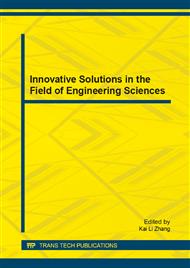p.867
p.872
p.878
p.883
p.888
p.895
p.901
p.906
p.911
Correlation Analysis and Control Scheme Research on PM2.5
Abstract:
The PM2.5 atmospheric pollution is becoming more and more serious. A lot of importance has been attached to its course of formation and control scheme. Especially the related research has been taken on the quantitative analysis and control. In this paper, a reasonable PM2.5 five years of treatment scheme is given for a city as an example. First of all, by using the correlation analysis, the correlation matrix of the city's 6 main AQI index were obtained on existing monitoring data. The correlation analysis is also taken on the PM2.5 and the other 5 primary AQI index. It gives the same conclusion, that is, PM2.5 is correlated with SO2, NO2, PM10 and CO. And the correlation is significantly linear. Then, by using stepwise regression analysis, the optimal regression equation about PM2.5 and 3 with comprehensive treatment and governance factors, PM10 SO2 NO2, is calculated. After converting the PM2.5 concentration into its AQI index for both the reference year and five years after target, the reference year's PM2.5, SO2, NO2, PM10 benchmark index value are also calculated. Then according to each of these 4 indicators of minimum changes, and still can meet the constraints, a nonlinear programming model and the nonlinear constraints are established and simplified as linear constraints. So, the model is transformed into a standard nonlinear programming problem. Finally, the possible annual average governance indicators are calculated. It Has a certain of practical significance for guiding the control scheme of PM2.5.
Info:
Periodical:
Pages:
888-894
Citation:
Online since:
June 2014
Authors:
Price:
Сopyright:
© 2014 Trans Tech Publications Ltd. All Rights Reserved
Share:
Citation:


